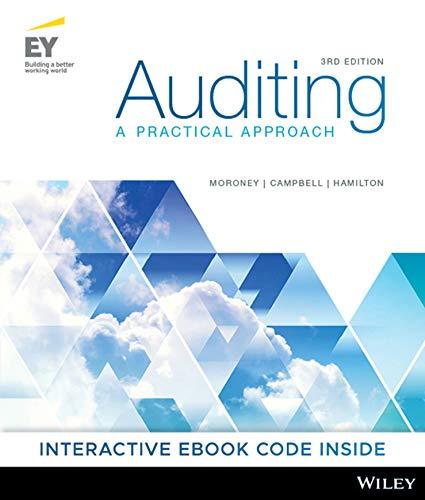Question
A job order costing system is used when a job or batch is significantly different from other jobs or batches. Cost accounting is usually
" A job order costing system is used when a job or batch is significantly different from other jobs or batches. Cost accounting is usually fairly simple in these systems. Labor and materials are entered on a job ticket. Overhead is usually added to the amount the customer will be charged for labor and materials. If you go to an auto repair shop, they will start a job ticket just for the work to be done on your car. Your job ticket will show charges for labor and materials, just for your job. Let's say they charge you $35 per hour for labor. That charge includes the mechanic's payroll cost. But it also includes an overhead charge - which is generally not stated separately. The overhead charge covers the costs of operating the garage - tools and equipment, rent, insurance, maintenance, utilities, etc. It is a way to allocate overhead (discussed below), and build it in to the amount charged to customers.
The garage will also make a gross profit on the parts they use to repair your car. This gross profit covers the cost of buying and maintaining a parts inventory, including department employee wages, insurance and warehousing costs. Job Costing involves the calculation of costs involved in a construction "job" or the manufacturing of goods done in discrete batches. These costs are recorded in ledger accounts throughout the life of the job or batch and are then summarized in the final trial balance before the preparing of the job cost or batch manufacturing statement. Job costing (known by some as job order costing) is fundamental to managerial accounting. It differs from Process costing in that the flow of costs is tracked by job or batch instead of by process.
The distinction between job costing and process costing hinges on the nature of the product and, therefore, on the type of production process:
- Process costing is used when the products are more homogeneous in Conversely, job costing systems assign costs to distinct production jobs that are significantly different. An average cost per unit of product is then calculated for each job.
- Process costing systems assign costs to one or more production Because all units are identical or very similar, average costs for each unit of product are calculated by dividing the process costs by the number of units produced.
- Many businesses produce products with some unique features and some common These businesses use costing systems that have both job and process costing features. job order costing system is used in situations where many different products are produced each period. For example clothing factory would typically made many different types of jeans for both men and women during a month. In a job order costing system, costs are traced to the jobs and then the costs of the job are divided by the number of units in the job to arrive at an average cost per unit.
The details here deal with a manufacturing firm, the same concept and procedures are used by many service organizations.
The record keeping and cost assignment problems are more complex in a job order costing system when a company sells many different products and services than when it has only a single product or
service. Since the products are different, the costs are typically different. Consequently, cost records must be maintained for each distinct product or job. For example an attorney in a large criminal law practice would ordinarily keep separate records of the costs of advising and defending each of her clients. And a clothing factory would keep separate track of the costs of filling orders for particular styles, sizes, and colors of jeans. A job order costing system requires more effort than a process costing system. Companies classify manufacturing costs into three broad categories:(1) direct materials, (2) direct labor, (3) manufacturing overhead."
Read and discuss the article in 2 to 3 paragraph post that includes the following:
- What is job-order costing
- How is it different than process costing
- Types of businesses that might use job-order costing (list at least three)
- Advantages of job-order costing
- Disadvantages of job-order costing
- Types of costs that need to be tracked
Step by Step Solution
There are 3 Steps involved in it
Step: 1

Get Instant Access to Expert-Tailored Solutions
See step-by-step solutions with expert insights and AI powered tools for academic success
Step: 2

Step: 3

Ace Your Homework with AI
Get the answers you need in no time with our AI-driven, step-by-step assistance
Get Started


